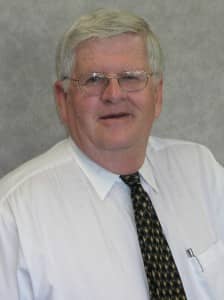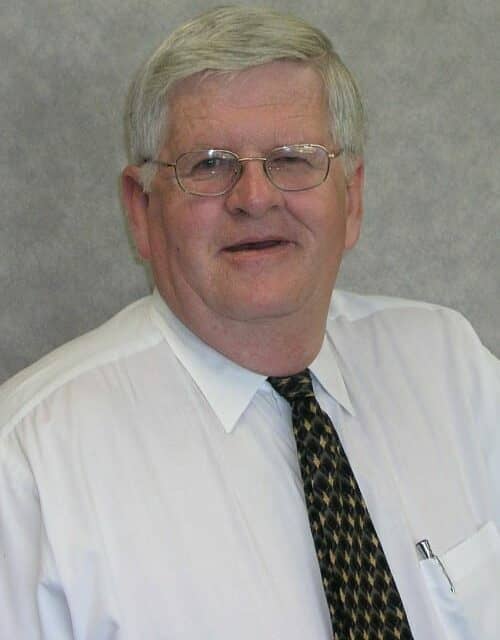 In April 1999, 24×7 published a Soapbox column titled “Rust-Out: The Silent Affliction.”* The article described how some biomeds stop progressing technology-wise and stay in their comfort zone, not looking to advance or take on new challenges.
In April 1999, 24×7 published a Soapbox column titled “Rust-Out: The Silent Affliction.”* The article described how some biomeds stop progressing technology-wise and stay in their comfort zone, not looking to advance or take on new challenges.
Here we are 17 years later, and we are talking about it again. Like many things in the past, I thought that the problem had been resolved and we had moved on. That thought came to a sudden crash at a recent meeting of the New England Society of Clinical Engineers. The biomeds, clinical engineers, and others in attendance showed so many of the attitude problems that lead to rust-out. A major contributing factor is that we still cannot agree on a name for our profession, despite AAMI’s efforts to promote healthcare technology management (HTM). I have been in Biomed since 1962—first for 14 years in industry before going to a medical center as a clinical engineer, then to international work before returning to Clinical Engineering. The HTM label does not fit my background or what I want for the future. It may fit yours. If so, promote it to others.
So many of those at the New England meeting expressed frustration with the lack of support they were receiving from the administration or, in certain cases, from their department leader. Others said that with all their facility’s training funds tied up in the information technology (IT) side of the house, they have no future training scheduled.
At the meeting I attended, it was the people with 10 to 15 years of experience in hospitals who seemed to be the most frustrated. Many expressed that they had “topped out,” both professionally and financially, in their present positions and that there was little chance of promotions or even training. A large portion of these experienced people will move on to some other position or industry just so they have a challenge in their careers. Others will stay put and complain about the job, the lack of movement, the pay, and the future and pull down their whole department.
A very large percentage of these “stationary technology personnel” did not know about all the free training that is available on the Web through organizations such as AAMI, ACCE, and online news outlets like Fierce Healthcare and Manufacturing.net. Past articles from Prep Talk (formerly ICC Prep) are already searchable on the 24×7 site. I will try to come up with a listing of other sites for future publication.
Also, more regional associations need to offer CEUs for those attending local seminars and meetings. Then attendees will be able to show those certificates to their boss’s boss to be sure that the leadership knows who they are and that they are working to improve healthcare delivery in their hospital or company.
It should be noted that a major hospital group in my area claims in the press to have committed over $1 billion to its electronic health record (EHR) system. This same hospital group has equipment more than 20 years old on the patient floors. If something goes wrong, they have to cannibalize units in storage to fix those devices. It seems a little off to me. All that money for technology—which will probably be obsolete before installation—while we have to support old and outdated devices that are used every day on and by patients. The hospital’s leadership seems to be drinking a lot of Kool-Aid from the government about the value of the EHR, but it’s pushing the system with no clarity as to what is actually needed, what is useless, and what the benefits are for the patients. As biomeds and clinical engineers, we make patients, not technology, our top priority.
One suggestion I want to make to everyone working in hospitals is to talk with the vendors of the technology you are looking to purchase. Talk with the product managers, as they can have modifications made to the product, especially if it does not degrade the product. Talk with technology people in other hospitals, both in your region and in other parts of the country, to learn what they are doing. Do your research with your clinical people so you can create the best purchase specification possible. Finally, work with your materials and financial departments to get the best possible equipment for the clinical team’s needs. By getting involved, you will improve your attitude towards your job and your satisfaction level.
In closing, I would like to challenge every teacher in programs that turn out all the technology professionals coming into healthcare. Spend some class time on how students need to promote the profession so the profession can be great and those in the profession valued by the administration, leadership, coworkers, and most of all, the patients. We need to knock the rust off and move forward. We have been moving technology forward for years. Let us be sure to keep it moving by working together and communicating our efforts.
Dave Harrington, PhD, is a healthcare consultant in Medway, Mass. For more information, contact chief editor Jenny Lower at [email protected].
*Editor’s note: 24×7’s online archives only go back to the mid-2000s.





How goes it, Dave? Been a while.
HTM doesn’t work for me, either. Then again, it doesn’t have to. What matters is what works for the people whose future isn’t behind them. If they’re smart, it won’t be rearranging deck chairs around the choice of a name…
You know how the saying goes: Insanity is doing the same thing the same way and expecting different results. That’s what this field, whatever it’s called, has been doing for decades. Or maybe it hasn’t?
To paraphrase another old saying: Clinical engineering hasn’t been tried and failed, it has never been tried. Is that what you’re suggesting? My perspective on that is grounded in experience limited to a career in two academic centers and contacts with colleagues in others, but I’m pretty sure that the business model you outline has been tried, at least in a few places. If so, it hasn’t fully succeeded. In academic-speak, it is necessary but insufficient. Maybe it was sufficient at some point in the past; perhaps it isn’t now? But good grief, if our younger colleagues today aren’t doing at least those very basic things, what are they doing?
Food for thought! Biomed Services Departments were created because of the need! We are still needed but our contributions to the Patient Care Team have evolved. Who does Nursing turn to when they need a solution. If you are not that person or department, then you still have work to do. We must have the equipment solutions for the care of the patients. And yes, this means keeping up with all Technology. Working with IT to connect all patient care equipment to the EHR is a must, get on board. Making sure the equipment needed is there when the staff needs it, is a must. Do what it takes, work on the Teams, LISTEN to Nursing, and you will be the needed department and still have all the challenges needed to keep you engaged. Performing all these tasks while keeping HCAPS and finance in mind is also a must. Some staff still haven’t learned that the customers (Patients, Families, Physicians, Nurses, Techs and Administration) all have choices.
Work Hard, have compassion and integrity.
“The hospital’s leadership seems to be drinking a lot of Kool-Aid from the government about the value of the EHR, but it’s pushing the system with no clarity as to what is actually needed, what is useless, and what the benefits are for the patients. As biomeds and clinical engineers, we make patients, not technology, our top priority.”
Thank you for stating this so clearly! Follow the money!
I don’t beleive that the name matters that much, after 27 years as a Biomedical Technician, most of that as a Tech 3.
What does matter is relationships, yes, even and especially with IS. Going the route of the cumbersome, beauracratic, form filling and filling all the squares does not normally get the job done for “Biomeds” who are responding to emergent patient and caregiver needs. What does get the job done is knowing who you work with outside of your own department. Who is it that you can count on and must team with to make your organization succesful. I hve found those people in my organization and to the chagrin of many of the bean counters and analysts get a lot of important work done without filling out the form. I have a relationship with the people that have the information and skills that my duties require to get the job done and together we make it happen in all kinds of situations. It is the mutual respect and trust in the relationships that I have that makes this work!
OK guys it gets even worse. There those of us who are HTF or healthcare technology fixing professionals. We seem to have little voice and no representative organization. But what’s killing us is manufacturers withholding repair parts and service manuals and service software and codes. HTMs need to get on the right to repair R2R band wagon because if they can not get parts and service manuals for HTF we will may all become EOL and Then SOL because the only game in town will be the OEM. So everyone start writing letters to the FDA in support of R2R
Congratulations to Dave Harrington for many years of insightful columns. He was never repetitious or dull. Thanks Dave and Success!
I’d like to comment on the article “It’s back:;Rust out” in the May2016 24×7.
There are many directions that “rust prevention” can take but all require intense interaction with physicians and nurses and continuing focused education. This required great effort and courage but “It is better to wear out than to rust out”